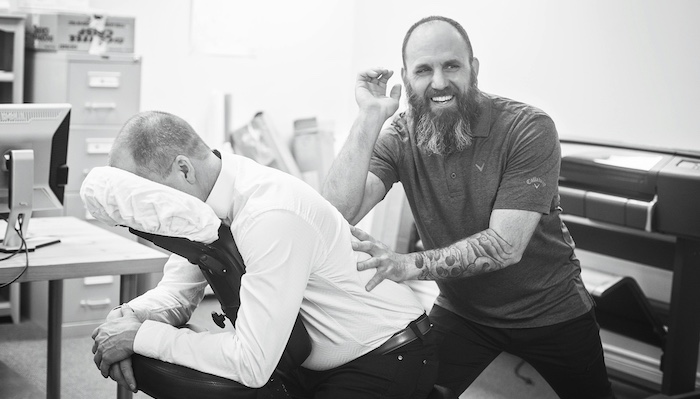
Treatment for lower back pain is usually initiated without a specific diagnosis or medical consultation. For effective care and relief of symptoms, a treatment program that is coordinated by a healthcare professional is recommended.
Here are a few common myths about the treatments available for back pain and the accurate facts supporting the truth for each.
Myth: Chiropractic Adjustment Makes Back Pain Worse
Truth: When delivered by a trained, licensed, and experienced chiropractor, and when done for the appropriate diagnoses, chiropractic treatments for lower back pain can have pain-relieving and healing effects on the lumbar (lower back) tissues. Manual techniques used by chiropractors help achieve the following goals:
- Reduce pain
- Improve soft tissue health
- Release tension within joints
- Improve joint movements
It is common to experience certain side effects after a chiropractic treatment, especially if high-velocity low-amplitude (HVLA) spinal manipulation is used. On average, over 50% of patients who undergo chiropractic adjustments may experience some degree of muscle stiffness, localized pain, and soreness. These side effects may be experienced as soon as within 4 hours of treatment and generally subside within 24 hours.
Myth: Massage Worsens Back Pain
Truth: Complementary medicine for back pain includes therapeutic massage. Therapeutic massage is delivered by a licensed and trained professional through hands-on manipulation of the soft tissues of the body to ease muscular aches and pains.
In treating back pain, massage can offer symptomatic relief of pain through the following methods:
- Improving physical and mental relaxation
- Increasing pain threshold through the release of natural pain-fighting hormones called endorphins
In general, massage is recognized as a safe therapeutic remedy. Depending on the type of massage administered, some degree of minor pain or discomfort may be experienced during or shortly after receiving the massage. These symptoms typically resolve within a few hours.
As with all types of treatments, there are specific contraindications for massage, such as applying pressure over an area with acute inflammation, skin infection, fracture, or other concerning problems.
Myth: Herniated Disc Won’t Heal Without Surgery
Truth: The searing pain from a lumbar herniated disc can cause significant discomfort depending on the extent of herniation and the type of nearby tissues that are affected, such as the sciatic nerve roots. For the vast majority of people, the pain usually resolves without any lasting pain or complications.
- Research indicates that over 85% of patients with acute herniated discs experience complete resolution of symptoms within 8 to 12 weeks.
- For those who do not experience symptom resolution, nonsurgical treatments, including physical therapy, manual manipulation, oral medication, and injection treatments, may be tried.
- Nonsurgical treatments are effective in controlling disc herniation-related pain and help reduce and eliminate pain.
Surgery for a herniated disc is rarely necessary unless a medical emergency is present. Surgery may also be considered as the last resort when neurological symptoms do not improve or worsen.
Myth: Back Pain Is Constant and Always Gets Worse
Truth: Back pain affects almost everyone at some point during their lifetime, and most people recover within a few months. For those who develop chronic back pain (pain that lasts 3 months or longer), recurrences are possible, with periods of relief in between.
If back pain is constant, adequately treating the underlying cause and making lifestyle modifications to rehabilitate the spinal structures can help provide longer-term pain relief. Over time, recurrences or flare-ups are possible, but seeking timely treatment can help decrease the severity of symptoms and the frequency of recurrences, and/or significantly reduce the pain over time.
Precision Pain Care and Rehabilitation has two convenient locations in Richmond Hill – Queens, and New Hyde Park – Long Island. Call the Queens office at (718) 215-1888 or (516) 419-4480 for the Long Island office to arrange an appointment with our Interventional Pain Management Specialists, Dr. Jeffrey Chacko or Dr. Sonny Ahluwalia.













